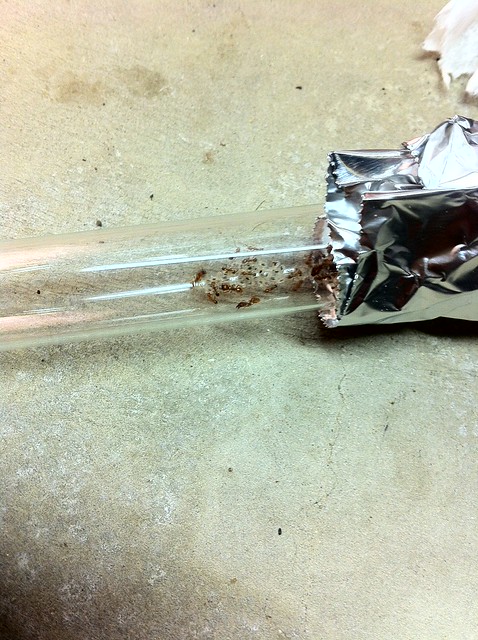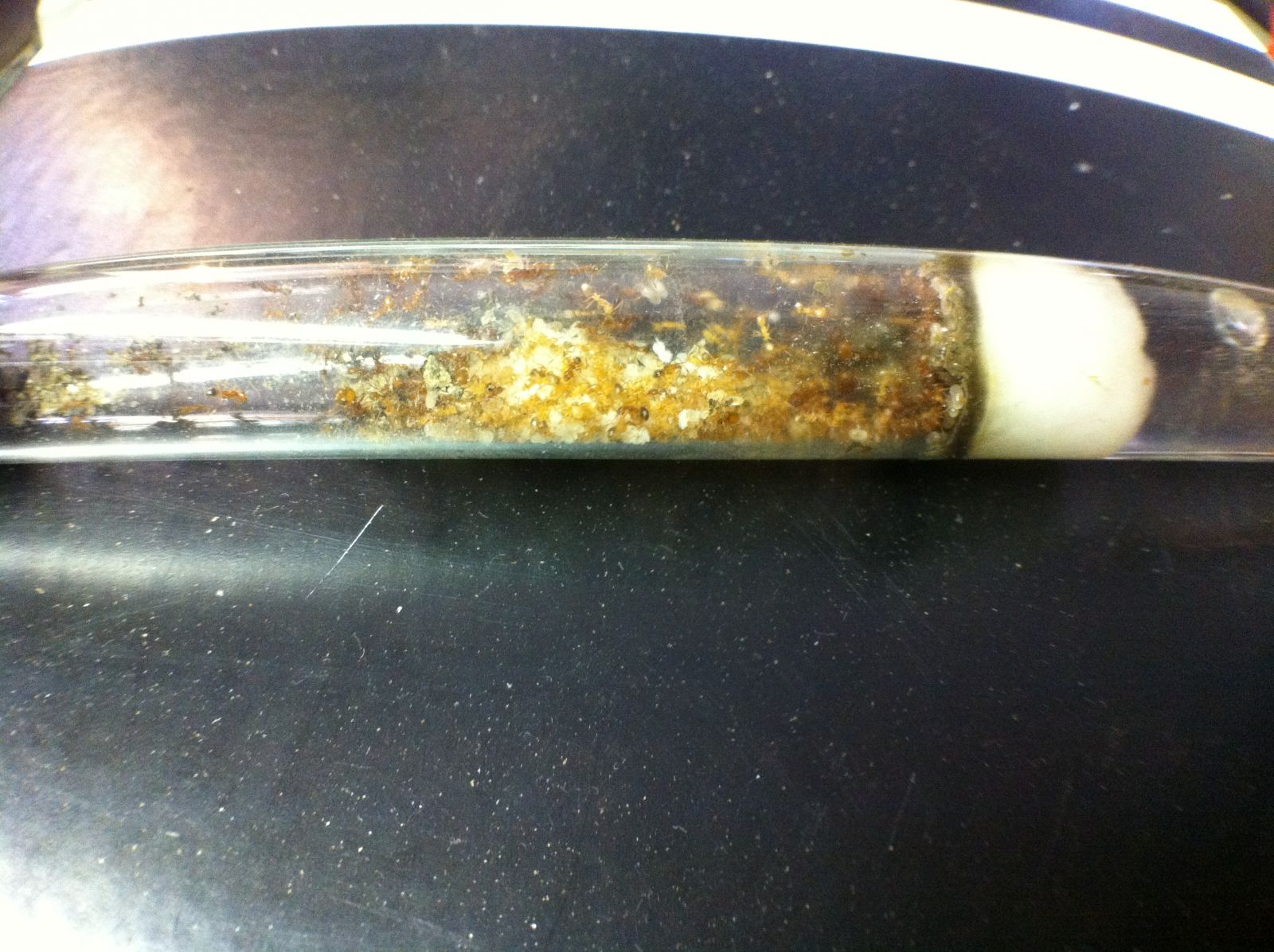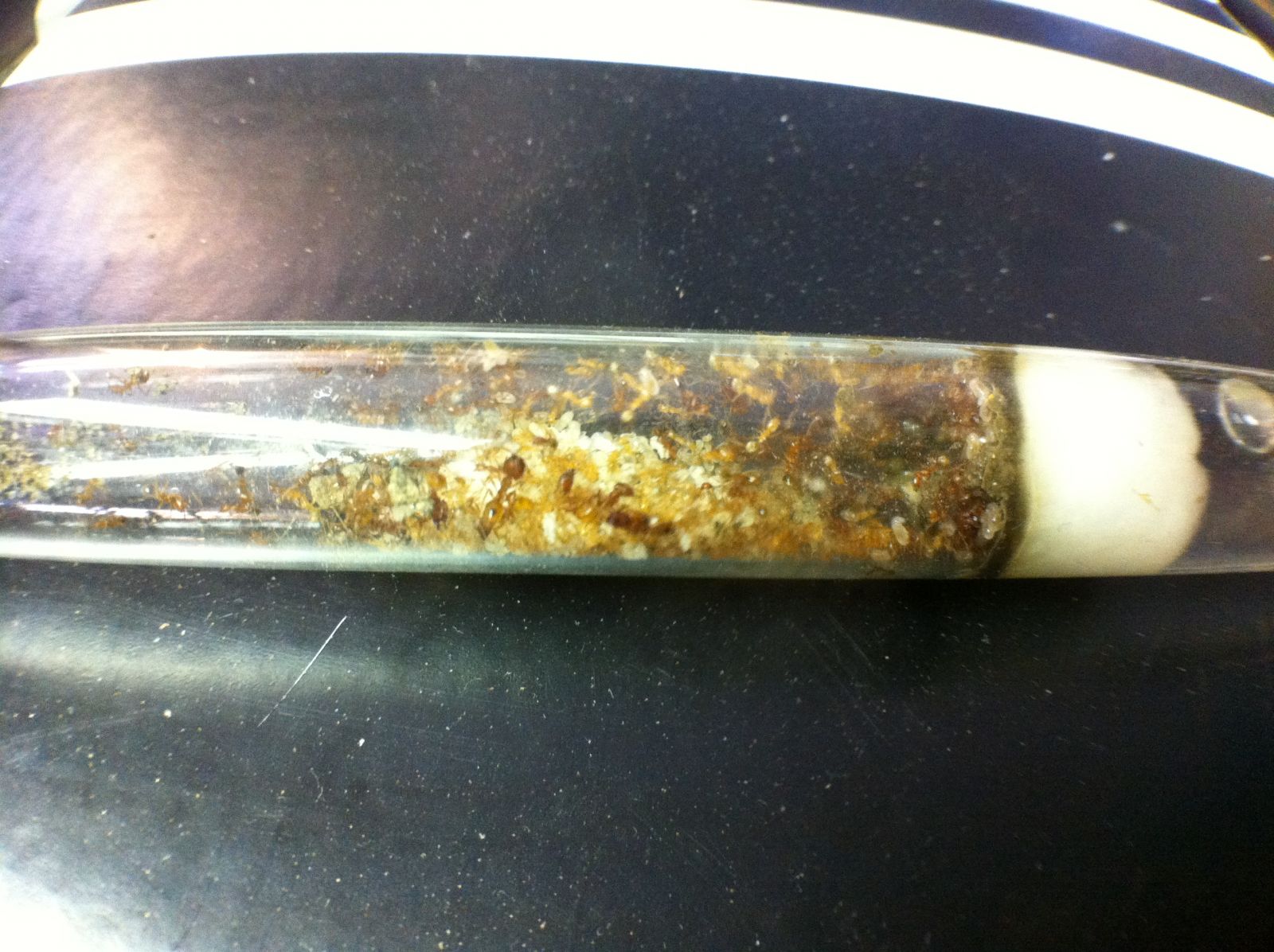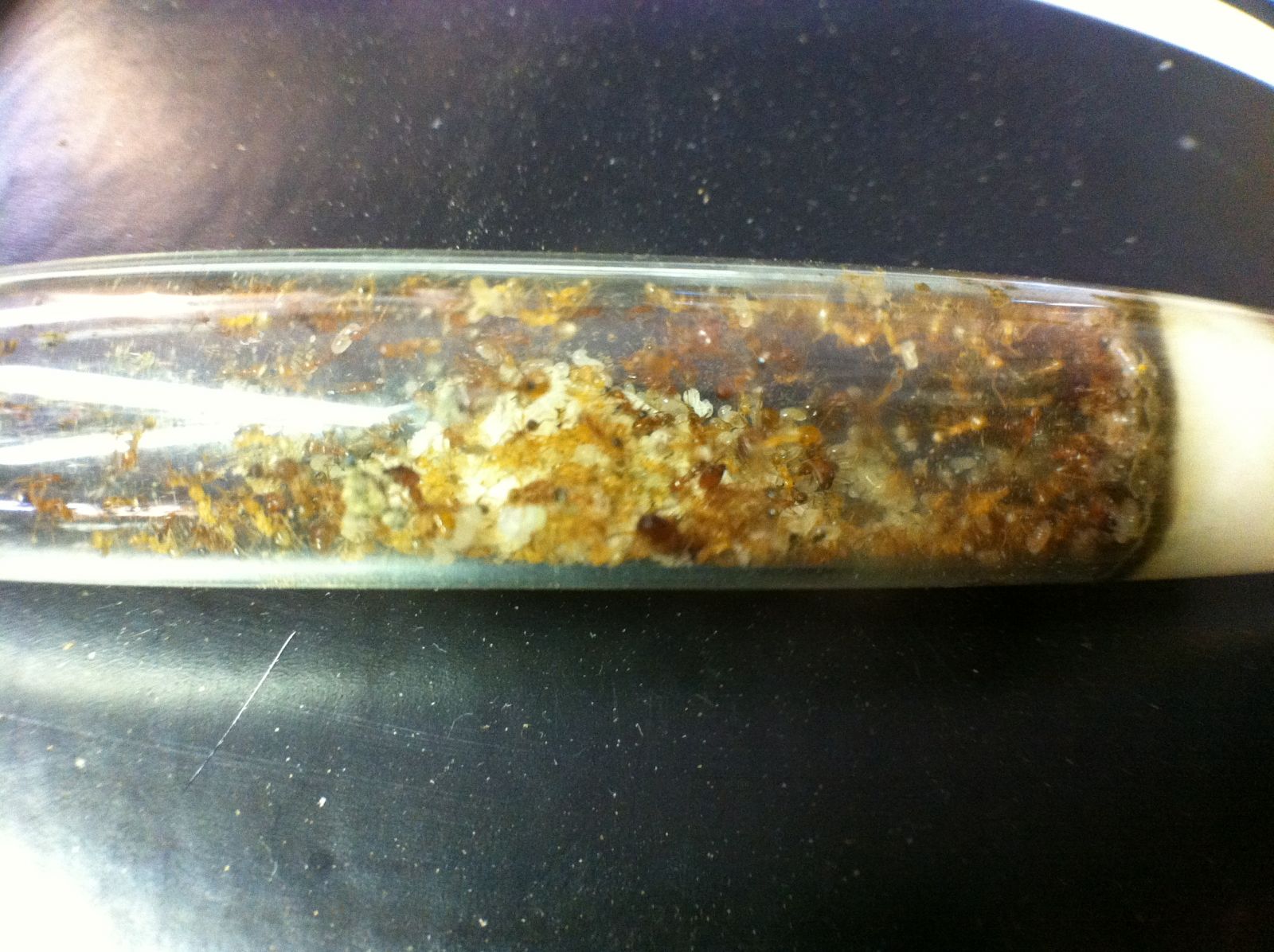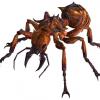2-5-2015
I checked on this colony, and most of the larvae are now pupae! There's so many!
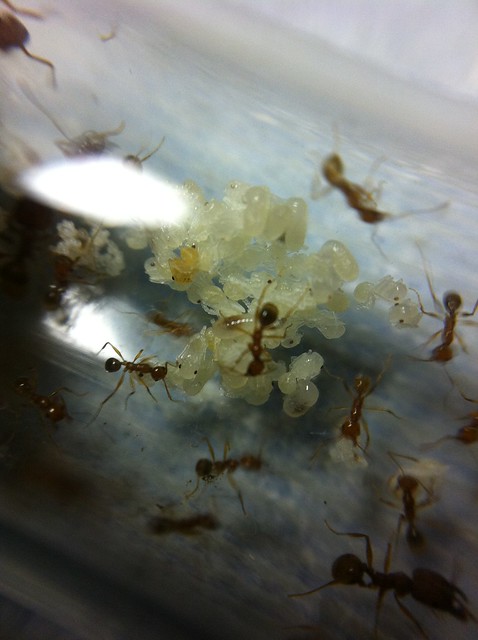
You can see the pile of eggs in the upper left part of the picture.
Also, I caught another colony the other day and couldn't get them all to go into a test tube. I dumped the dirt into a pretzel container and they made a nest in the tiny layer of dirt at the bottom. To get them to move, I put the container over a heater so the soil would dry out and they'd move into a test tube I left on top. It seems to be working, but I can't do anything until I see the queen in the test tube!
Here's a worker on the side of the container.
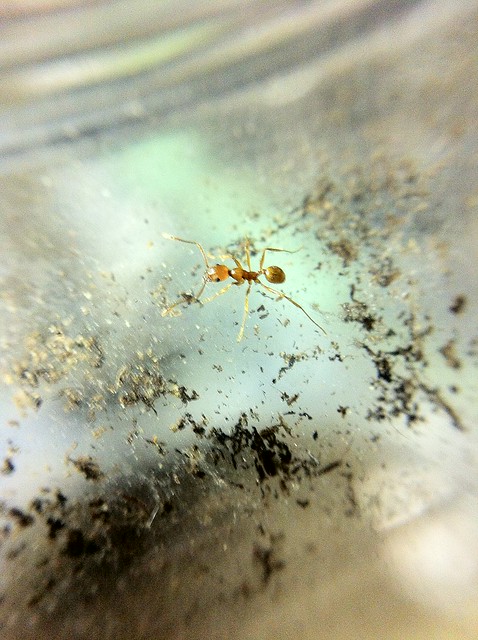
Here's the test tube. It's a little hard to take pictures of it since it's at the bottom of a container.
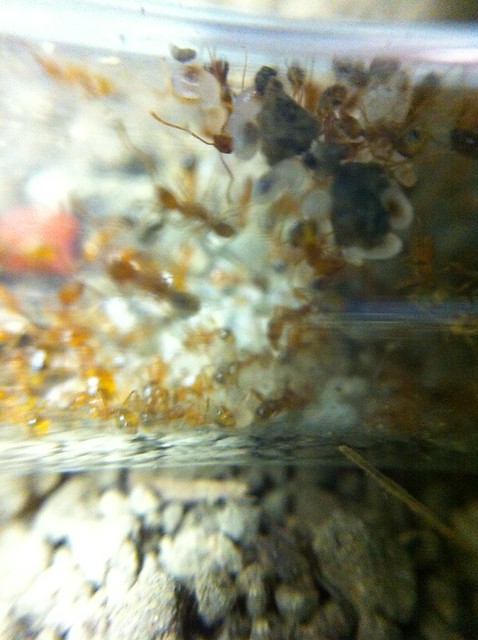
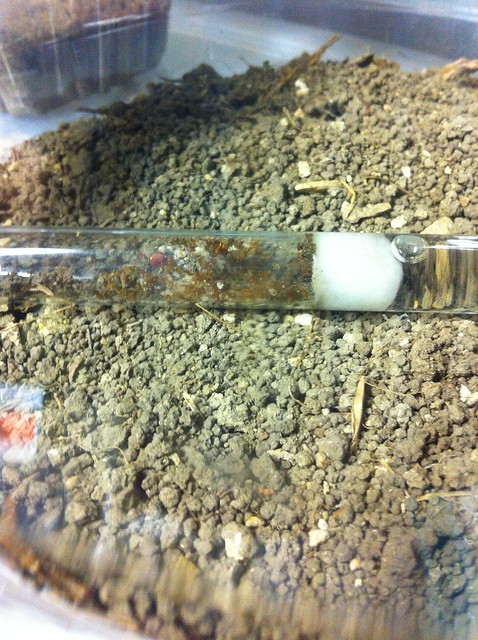
Edited by kellakk, February 5 2015 - 10:35 PM.
